| |

Home
Rails and
Trails
Innovative
Transport
Sustainable
Community
Heritage
Rail
Heritage
Preservation
Regional
Rail History
Alberta
Central
Railway
Calgary
and
Edmonton
Railway
Canadian
Northern
Western
Railway
Canadian
Northern
Railway
Red Deer
and Area
Personal
Profile
Contact Me
Links
Site Map
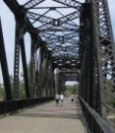

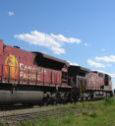


|
Canadian Northern
Western Railway (Brazeau)
With the discovery of commercially profitable coal deposits in the
Brazeau-Bighorn area, Martin Nordegg received a charter in 1908 to build
the Alberta and Brazeau River Railway Company from a point near Bowden
on the Calgary-Edmonton Railway and follow the valleys of the Red Deer,
Raven and Clearwater Rivers to Rocky Mountain House and Kootenay Plains
and northward to connect with the Grand Trunk Pacific Railway.
With no support from either Canadian Pacific or Grand Trunk Pacific,
Nordegg turned to William McKenzie and Donald Mann of the Canadian
Northern Railway to build the line. A new charter was obtained under the
name of the Canadian Northern Western Railroad that included a new route roughly
parallel to the
Alberta Central Railway between Red Deer and Rocky
Mountain House.
The Brazeau line originated from south of Stettler on the newly-opened
Canadian Northern north-south line in 1911. Construction progressed
quickly west running a few miles north of Red Deer.
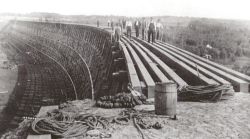 During the same
year, the railroad started construction of the trestle across the Blindman River at Burbank, constructed a spur line to North Red Deer and
laid steel as far west as Sylvan Lake. During the same
year, the railroad started construction of the trestle across the Blindman River at Burbank, constructed a spur line to North Red Deer and
laid steel as far west as Sylvan Lake.
The
competing Alberta Central Railway was building a line at the same time from Red Deer, much of the line parallel with the
Canadian Northern Western Railroad.
There were many stories of fights and acts of sabotage that broke out
between the two construction crews in their quest to get to the Brazeau
coal fields first.
 The Canadian Northern
Western reached Rocky Mountain House before the Alberta Central in 1912,
although the line wasn't officially opened until 1914. However, the
Alberta Central/Canadian Pacific had already built a good-quality 725'
bridge across the North Saskatchewan River as well as track 2 miles on
each side of it. The Canadian Northern
Western reached Rocky Mountain House before the Alberta Central in 1912,
although the line wasn't officially opened until 1914. However, the
Alberta Central/Canadian Pacific had already built a good-quality 725'
bridge across the North Saskatchewan River as well as track 2 miles on
each side of it.
Rather than build a separate bridge across the river, the Canadian
Northern Western (later part of Canadian National) made an arrangement with Canadian Pacific,
operators of the Alberta Central, to have running
rights on that 4-1/2 mile section of track between Otway and Ullin,
including the Rocky Mountain House post office station at Lochearn on
the east side of the river. (The current Lochearn industrial siding is
about two miles west of the river.)
In return, the Canadian
Pacific would have running rights to the Brazeau coal fields. It was
unlikely however that Canadian Pacific exercised those rights as they
had no or very few customers west of Rocky Mountain House.
Meanwhile, the Brazeau Colleries had been stockpiling coal since late
1911 while waiting for the railway to arrive. It took until late 1913
for the railway to reach Nordegg on unballasted rails where 100,000 tons
of coal was waiting to be shipped out. The first shipment left Nordegg
in 1914.
The spur line constructed south from North Junction near Blackfalds to
North Red Deer in July 1911 was intended to be part of a new north-south
Calgary-Edmonton line but it was never built. A bridge was erected
across the Red Deer River from North Red Deer near the mouth of Waskasoo
Creek in 1920 and a station and other facilities were constructed where
the Co-op Plaza shopping mall is now located.
 With the river bridge being washed out in the spring floods a number of
times, the railway abandoned the river crossing in 1941 but continued
service to the city station grounds via a connection to the Canadian
Pacific along the present site of the museum, downtown Safeway store and
Red Deer Lodge. With the river bridge being washed out in the spring floods a number of
times, the railway abandoned the river crossing in 1941 but continued
service to the city station grounds via a connection to the Canadian
Pacific along the present site of the museum, downtown Safeway store and
Red Deer Lodge.
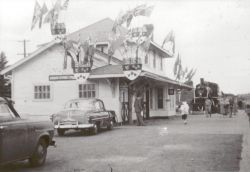 The last steam locomotive to the Red Deer station marked
its closure in 1955 but the rail yards continued to be used until they
were moved to the north side of the river in 1961 at which time the
railway stopped using the Canadian Pacific downtown connection. The
station and turntable had been removed in 1960. The last steam locomotive to the Red Deer station marked
its closure in 1955 but the rail yards continued to be used until they
were moved to the north side of the river in 1961 at which time the
railway stopped using the Canadian Pacific downtown connection. The
station and turntable had been removed in 1960.
The railroad became part of the Canadian Government Railways in 1918 and
absorbed into the newly-created Canadian National Railways in 1919. In
1923, modifications were made at Alix South Junction (on the former
Grand Trunk Pacific Railway) as part of a consolidation and
rationalization of the various railroads comprising the new CNR. Mirror
replaced Big Valley as the divisional point for train crews for the
Brazeau Subdivision as well as the north-south Calgary-Edmonton former
Grand Trunk Pacific line.
The last mine in Nordegg was closed in 1955. The line from Rocky
Mountain House to Brazeau (Nordegg) was formally abandoned in 1986 but
had had virtually no traffic since the mines closed thirty years
earlier. The portion to Rocky Mountain House had limited local traffic
serving Sylvan Lake, Eckville and Rocky Mountain House as well as a few
other grain elevators, a lumber mill and small oil and gas facilities
for the next twenty years. Motive power on the line switched from steam
to diesel in 1959.
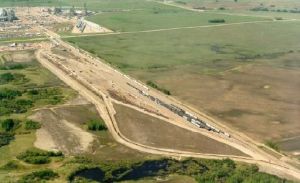 The
railway got a new lease on life in the mid-1970s with the construction
of a spur line to the Ram River sulphur facility in 1974 and the massive
Alberta Gas Ethylene/Nova petro-chemical plants at Joffre and Union
Carbide/Dow plant at Prentiss both east of Red Deer. The
railway got a new lease on life in the mid-1970s with the construction
of a spur line to the Ram River sulphur facility in 1974 and the massive
Alberta Gas Ethylene/Nova petro-chemical plants at Joffre and Union
Carbide/Dow plant at Prentiss both east of Red Deer.
The Canadian Northern Railway in Central Alberta (Canadian National)
The Calgary and Edmonton Railway
(now Canadian Pacific Railway main north-south line)
The Calgary and Edmonton Railway
near Red Deer
The Alberta Central Railway
(abandoned Canadian Pacific Alberta Central subdivision)
Railway Heritage Preservation
in Central Alberta
The Alberta Central Heritage Model
Rail Project
'Moving People by Rail' Themed
Community Proposal
Historic Rail Background
for 'Moving People by Rail'
 |
|
|